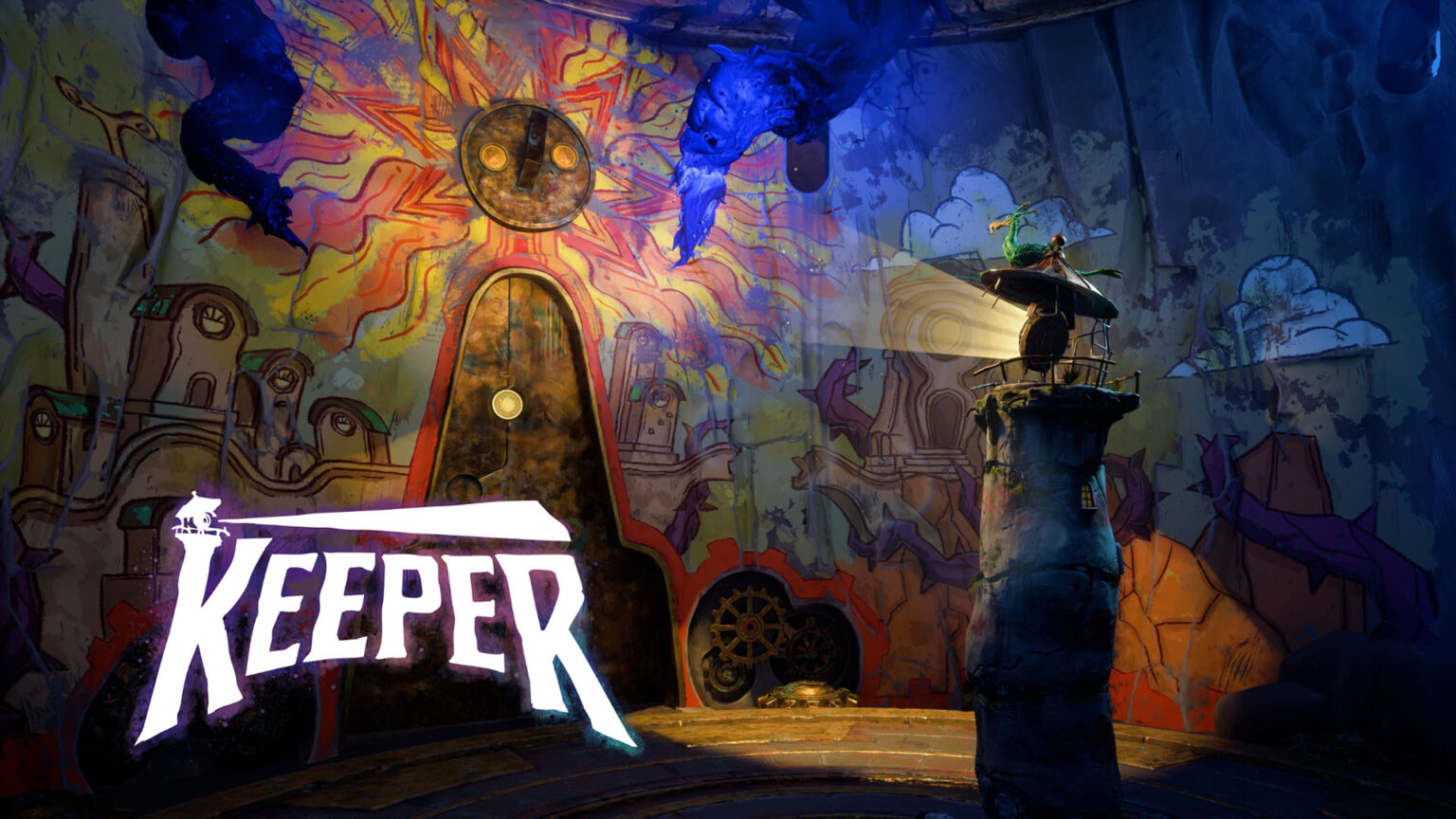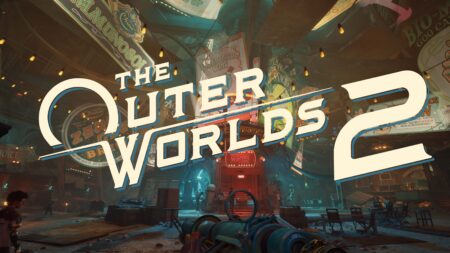Isolation can change how you see the world. When everything stops, you start to notice the smallest things, how light moves across water, how the wind fills the silence. Keeper, the new game from Double Fine Productions, feels like it was born from that kind of quiet reflection. It is a game about what remains after we are gone, told entirely without words. Instead of characters or dialogue, it uses color, sound, and the rhythm of movement to speak.
You play as an old lighthouse that wakes up after centuries of stillness. When a small seabird named Twig crashes into it during a violent storm called The Wither, the lighthouse flickers back to life. It crumbles, stands up, and begins to walk across a forgotten island. The two form an unlikely bond as they travel toward a distant mountain at the island’s center. There are no cutscenes or text boxes to explain anything. The story unfolds through quiet gestures and visual cues. You learn to read emotion in the way the lighthouse moves, or in the moments when Twig pauses and looks back.
The relationship between these two wordless companions gives the game a sense of warmth. It turns what could have been a lonely journey into something hopeful. The silence feels intentional, like the world is speaking in its own language and you are finally listening.
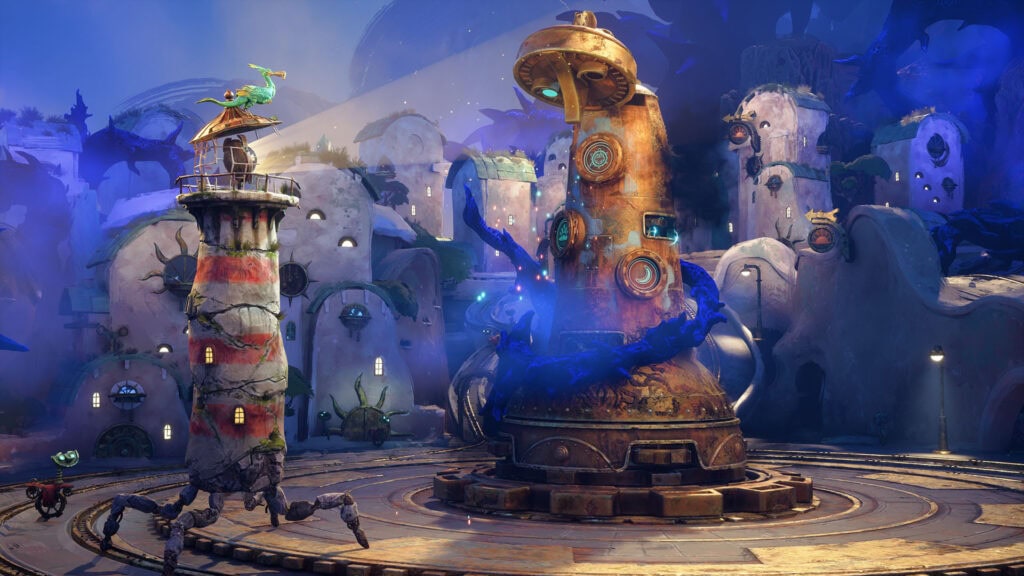
Creative lead Lee Petty calls Keeper “weird but chill,” and that phrase sums it up better than any genre label. The game’s world feels surreal yet natural, as if it grew out of a dream that someone once painted. Petty credits Surrealist painters like Max Ernst and Salvador Dalí as inspiration, along with films such as The Dark Crystal and Nausicaä of the Valley of the Wind. You can feel those influences everywhere.
The island is full of organic forms that bend and stretch in strange ways. Trees resemble coral. The ground shifts like it is breathing. Rock faces twist into impossible shapes. Every new area looks like a different mood made visible. It is clear that every camera angle and composition has been chosen to resemble a painting. The fixed perspectives can sometimes limit your view, but more often they make the experience feel deliberate and composed. It is not just a level you walk through. It is a moving piece of art.
The world invites you to slow down. There are moments where nothing happens for a full minute, and that pause becomes part of the storytelling. The wind hums through hollow towers. Light flickers across pools of water. It is a reminder that beauty does not always need explanation.
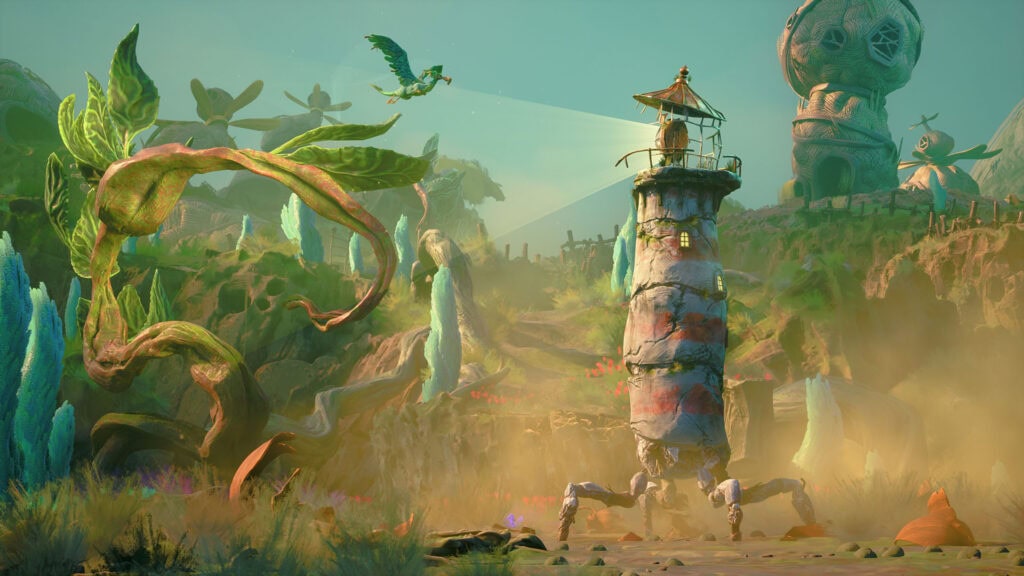
The central mechanic is simple. The lighthouse shines a beam of light that interacts with the world. It makes plants bloom, drives away darkness, and opens new paths. It is the only tool you have, but it feels expressive rather than limited. The puzzles rely on intuition and observation instead of logic or challenge.
There is no way to die, no timer, no failure screen. Keeper is not trying to test you. It wants you to explore at your own pace. When you are unsure where to go, the best approach is simply to keep moving. Some areas are more puzzle heavy, but most feel like quiet explorations of space and sound. It is less about finding the solution and more about watching how the world responds to your light.
That freedom is both a strength and a weakness. The gentle pacing makes the journey feel meditative, but some players may find it too slow. The simplicity of the puzzles means the mechanics never really evolve. For me, that still worked. It felt consistent with the game’s theme of persistence and renewal.
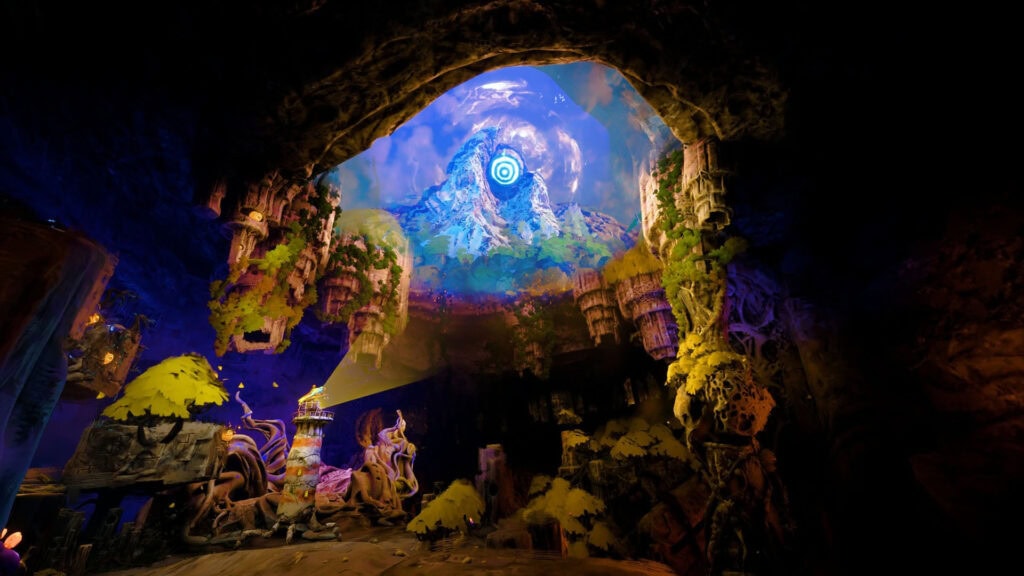
Keeper’s greatest strength is its presentation. Visually, it is stunning. The world feels alien but familiar, alive yet deserted. The art direction leans into surreal shapes and organic motion. It feels like nature reimagined after humanity’s absence. Every frame is drenched in atmosphere.
Composer David Earl completes the experience with a score that blends soft synths and natural sounds. It does not overwhelm the world. It drifts through it. The music feels like it was written for the landscape itself. When the light flares across the horizon and the music swells, the result is breathtaking.
Technically, the build runs smoothly on the Xbox Series X, though the pre-release version noted some minor camera quirks and audio degradation that a Day 0 patch should address. These issues are small and never break the mood, but they are worth noting. Watching beams of illumination ripple through fog remains one of the most striking visual effects I have seen all year.
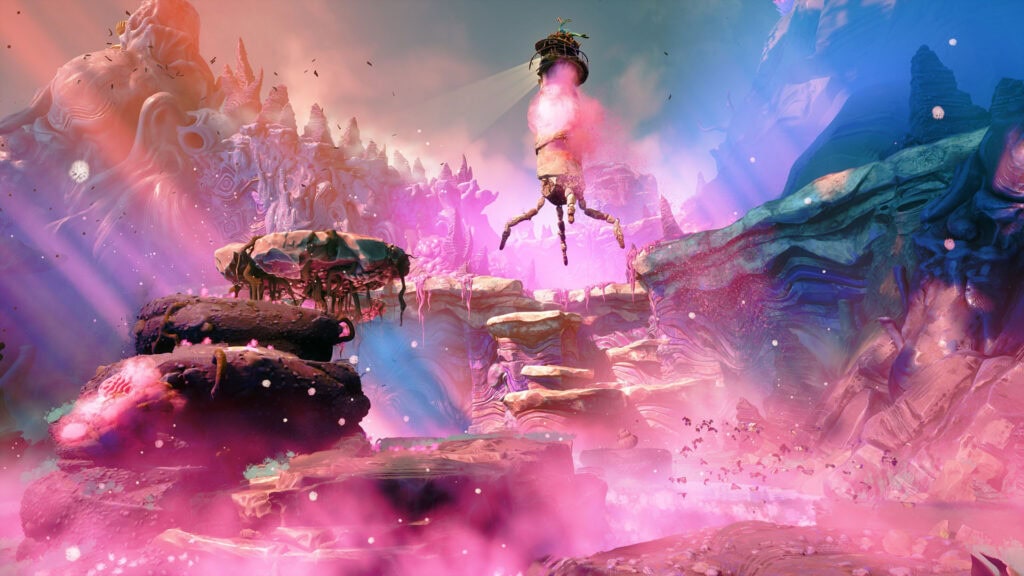
Double Fine has done good work making Keeper approachable for different players. There are fully remappable controls, adjustable text size, and options to reduce motion blur. The interface supports twenty-six languages. Since there is no spoken or written dialogue, the story translates effortlessly across regions. It is an elegant way to make a game universal.
The slow pacing can test your patience at times. There are stretches where it feels like nothing new is happening. But when you surrender to its rhythm, Keeper becomes strangely peaceful. It rewards stillness. You begin to notice details you might have missed if the game moved faster, the way a shadow curls, or how the sound of the ocean fades as you climb higher into the mountains.
What lingers after finishing Keeper is not the puzzles or mechanics, but the emotion it carries. It is a story about renewal, about the small acts of connection that survive long after everything else fades. The friendship between a walking lighthouse and a single bird might sound absurd, but within the game’s world it feels profound.
There is a quiet optimism running through the entire experience. It does not preach or explain. It simply exists, and asks you to feel it. That restraint is what makes it powerful. In a year full of loud games chasing spectacle, Keeper stands out for its stillness. Its imperfections are easy to forgive when you realize how much heart it has. Beneath the surreal art and gentle puzzles lies a message that feels timeless. Even after collapse, light finds a way to move forward.
Played on Xbox Series X review build provided by Xbox and Double Fine Productions.
Keeper (Xbox Series X)
Keeper will not be for everyone. It moves slowly and refuses to hold your hand. But for those willing to meet it on its own terms, it offers something rare. It is a meditative, painterly adventure that values mood over mastery.
The Good
- Beautiful, surreal art direction
- Wordless storytelling with emotional depth
- Strong music and sound design
- Emotional and thematic impact
The Bad
- Slow pacing
- Puzzles are simple and do not evolve much


